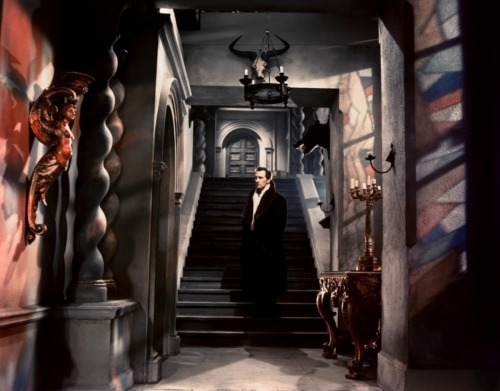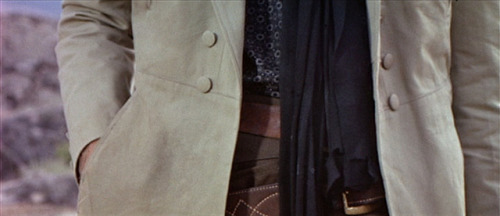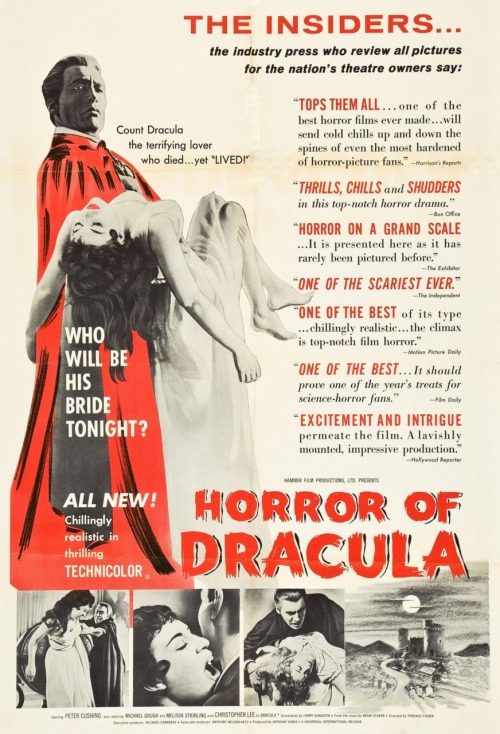Horror of Dracula, directed by Terence Fisher; and The Good, the Bad, and the Ugly; directed by Sergio Leone; do not seem to have much in common besides violence more colorful, bloody and brutal than that shown in their genre predecessors. Yet one is a war epic where no main character fights in nor cares about war. The other film -intentionally or not- acts out tensions that could have sparked war in the time it was made.
In the The Good, the Bad, and the Ugly, the theme of civil war recurs in many character relationships. Brothers, business partners, fellow soldiers and others are divided by various interests and loyalties. There is also the actual Civil War, which rampages through the same south-western United States where our leads roam. Unlike most films set in this era, the three main characters do not belong to any side of the war. They pursue their own cons and hunts, exploiting local and state criminal laws and any other factors they encounter. The war winds in and out of the plot, saving one character from an otherwise inescapable fate, and spurring several scenes of interpersonal conflict or concern. Intensity built from personal interest and fate leads to a climactic shootout that could happen any time and any place. One look at the graveyard setting, though, shows that the film never escapes the ghost of war.
Bram Stoker’s Dracula and its many filmed adaptations begin with Jonathan Harker, an everyman real estate employee who unwittingly ends up in business with a vampire. Horror of Dracula turns Harker into a cognizant infiltrator. He poses as Count Dracula’s new personal librarian in order to fulfill a mission. While it’s amusing to think of a vampire count hiring a personal librarian (if he just wanted a warm-blooded person, he has the surrounding village to feed on), the important point is that position gets Harker within the Count’s castle walls. Who sent Harker on this undercover mission? Van Helsing, a man of science and faith, determined to fight against the godless creatures who feast on red blood. A scene with Harker’s relatives furthers the spy parallels when an official cannot reveal the true nature of a family member’s work and, to put it best, current existence status.
Agents of Dracula are hidden amongst the populace, and can turn loved ones into new recruits. Border guards are bribed and tricked in a vague Eastern European location. There is even a secondary character surnamed Marx- but while his funeral home plays an important part in the story, the character himself is just a jolly old man with dark humor. This Cold War framing does not extend to every aspect of the movie, and was probably not even a subtext intended by those who worked on the film. However, it adds a little layer of brain game to find Cold War parallels in an already entertaining horror film.
Under the surface, Horror of Dracula’s characters can be seen as agents of war between nations and ideologies. The main trio in The Good, The Bad, the Ugly dismiss that type of war. Violence is between solo fighters, inside and outside the army, and the antihero lead even calls one battle “a waste.” Dracula’s enemies fight for life and goodness, while Leone’s cowboys fight for life and gold. Both movies, however, operate on trust and free will. Whom you can trust and how long that trust can last?
Does the pursuit of a wealthy long life (or afterlife) foster personal freedom or destroy it? Is it worth the abandonment of family, or the deaths of others? Not even the unselfish Jonathan Harker escapes judgment, for while he works for the greater good, he leaves his family without a clue as to what might happen to him, and inadvertently endangers a beloved cousin. Leone’s trio are lone vagabonds with no care or nearly no care for others. There is an argument with a long-lost sibling who criticizes a main character for departing home to become a bandit. The argument brings up the needs of a group versus the needs of the individual, and it doesn’t end with complete triumph for either side.
Horror of Dracula displays excess in its bold colors (reputedly the first vampire movie to have bright red blood, and the second Hammer movie to include that feature after Curse of Frankenstein), low-cut eroticism, and the most lavish sets possible on a relatively small budget. It is traditional in all other ways, following a familiar story where good people fight one impulse-driven collective for the lives and souls of their own collective. The Good, The Bad, and the Ugly is packed with a large cast of extras and numerous locations. However, colors are dominated by blue and brown, muted by sun and dust. Flat landscapes and widespread vistas of sand eclipse all other sets. It is a long-running movie with a minimalist plot, savage and radical for the time but (with the other movies in Leone’s "Dollars Trilogy") a template for spaghetti westerns and other films to come. It is the relentless self-centeredness of the characters that give brief flickers of sympathy and partnership their grace.
Final battles, in both films, are fought over a grave- where all wars end. People in wartime, banding together and breaking apart- it is this theme these dissimilar films share.
They also share a hero's outfit of coat and scarf.





No comments:
Post a Comment